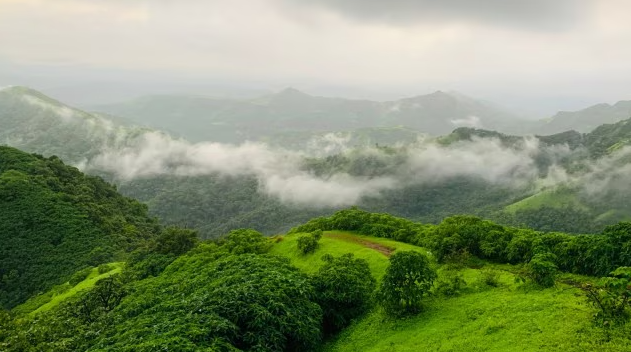"This Land is Their Land" (GS Paper 3, Environment)

Context and Background
- The article from the Indian Express, featured in the Ideas Page, highlights the significant environmental degradation occurring in India, with a particular focus on the Western Ghats.
- It explores the consequences of aggressive human activities such as quarrying, mining, and construction in ecologically sensitive regions.
- This degradation is leading to frequent environmental disasters, such as landslides, and underscores the ongoing conflict between development and ecological preservation.
Environmental Degradation and Human Intervention
- The Western Ghats, a crucial ecological zone in India, have been heavily impacted by human activities.
- The Western Ghats Ecology Expert Panel (WGEEP) identified these areas as highly sensitive and recommended a ban on disruptive activities.
- However, the government's initial suppression of the WGEEP report, due to its perceived “anti-development” stance, exemplifies the tension between developmental aspirations and environmental conservation.
- When the WGEEP report was eventually made public, it sparked widespread debate and protests, particularly in Kerala, where local communities mobilized in defense of their environment.
- This reaction illustrates the broader conflict in India between the drive for economic development and the need to preserve ecologically sensitive areas.
Struggle Against Quarrying and Community Impact
- A poignant example of environmental degradation is the case of Chemban Mudi in Kerala’s Pathanamthitta district.
- Over a decade, extensive quarrying operations caused severe health and environmental issues, including respiratory illnesses, landslips, and water contamination.
- The local community, predominantly organized through Kudumbashree women’s groups, successfully halted these operations in 2013 through grassroots activism.
- This movement underscores the capacity of local communities to challenge and rectify environmental injustices despite facing considerable risks.
Empowerment Through Technology and New Opportunities
- The proliferation of affordable smartphones has been a game-changer for marginalized communities.
- This technology allows them to communicate, organize, and access new economic opportunities.
- For instance, tribal communities in remote areas have used smartphones to engage in activities like online livestock sales, illustrating how technology can empower previously marginalized groups and facilitate their involvement in economic activities.
Proposals for Empowering Local Communities
The article proposes several measures to further empower communities in regions like Wayanad:
- Control of Rock Quarries: Transferring control of rock quarries to local women's groups, inspired by the successful model in Mendha (Lekha) village, Gadchiroli, could enhance local management and ensure that the benefits of quarrying are more equitably distributed.
- Tourism Industry Regulation: Restricting tourism to homestays organized by tribals, a model that has been successful in Goa and Sikkim, would ensure that tourism benefits are directly received by local communities rather than external operators.
- Tea Estate Management: Handing over the management of tea estates to labor cooperatives could ensure fair wages and improved living conditions for workers, fostering a more equitable and sustainable approach to estate management.
- Legal Challenge to the Wildlife Protection Act: The article suggests a legal challenge to the Wildlife Protection Act (WLPA), arguing that its current provisions unduly restrict people's ability to protect themselves and their property from wildlife threats, thus infringing on their fundamental rights.
Call for a New Dawn of Assertion
- The article concludes with a call to action, urging the common people of India to shed their passivity and assert their rights.
- It envisions a society where marginalized and oppressed individuals rise to challenge injustices and claim their rightful share of resources.
- By combining traditional activism with modern technology, the article advocates for a transformative shift towards a more equitable distribution of resources and opportunities.
Conclusion
- The article "This Land is Their Land" sheds light on the crucial intersection of environmental degradation and community empowerment in India.
- It underscores the need for a balanced approach that respects ecological limits while addressing the legitimate needs of local communities.
- The proposed measures aim to empower these communities, ensuring that they have a direct stake in the management of their resources and environments.
- This empowerment is seen as essential for fostering a just and sustainable future, where the marginalized are able to assert their rights and secure their place in the nation’s development narrative.


